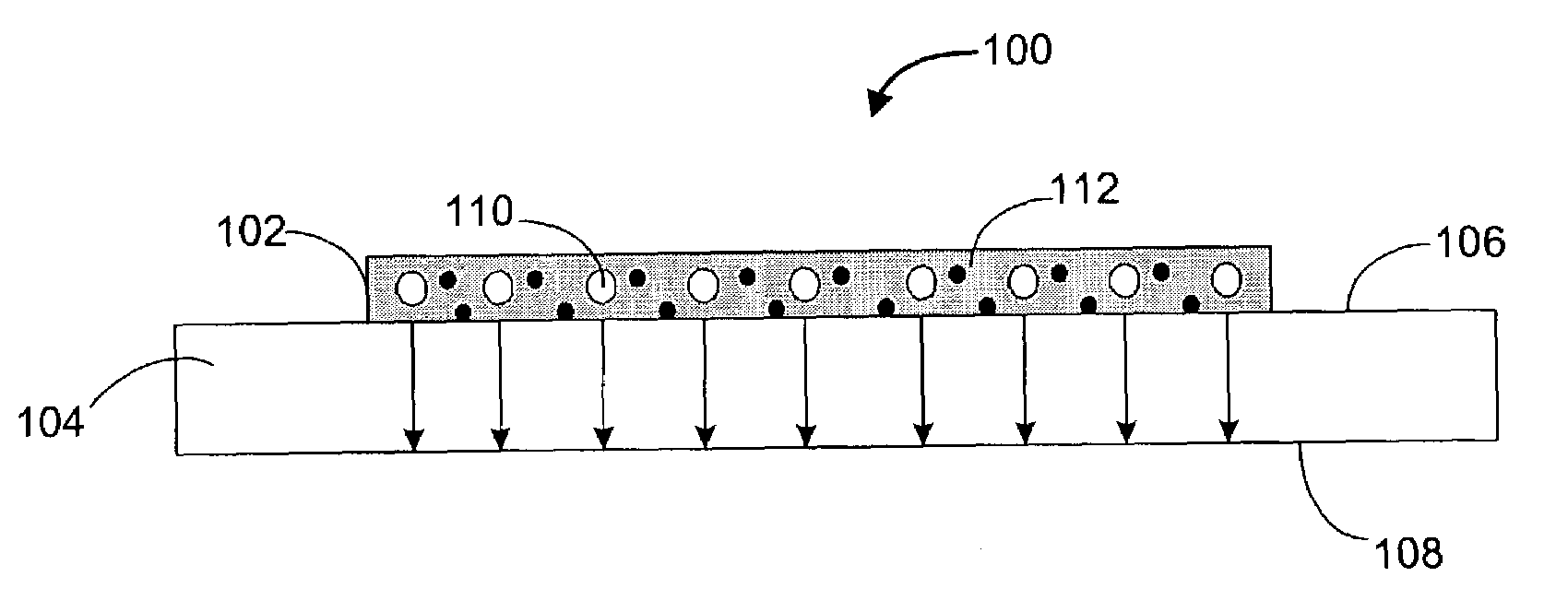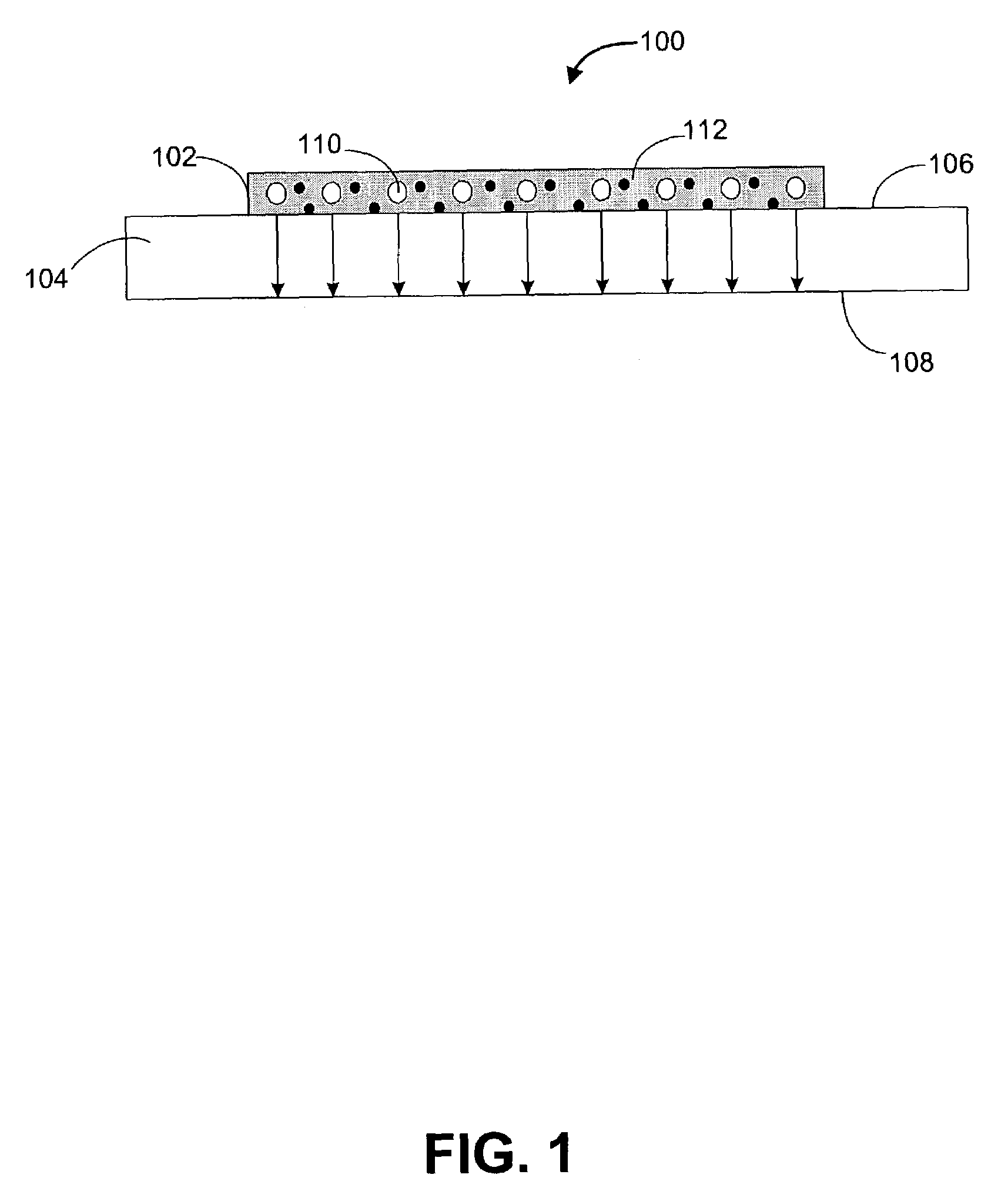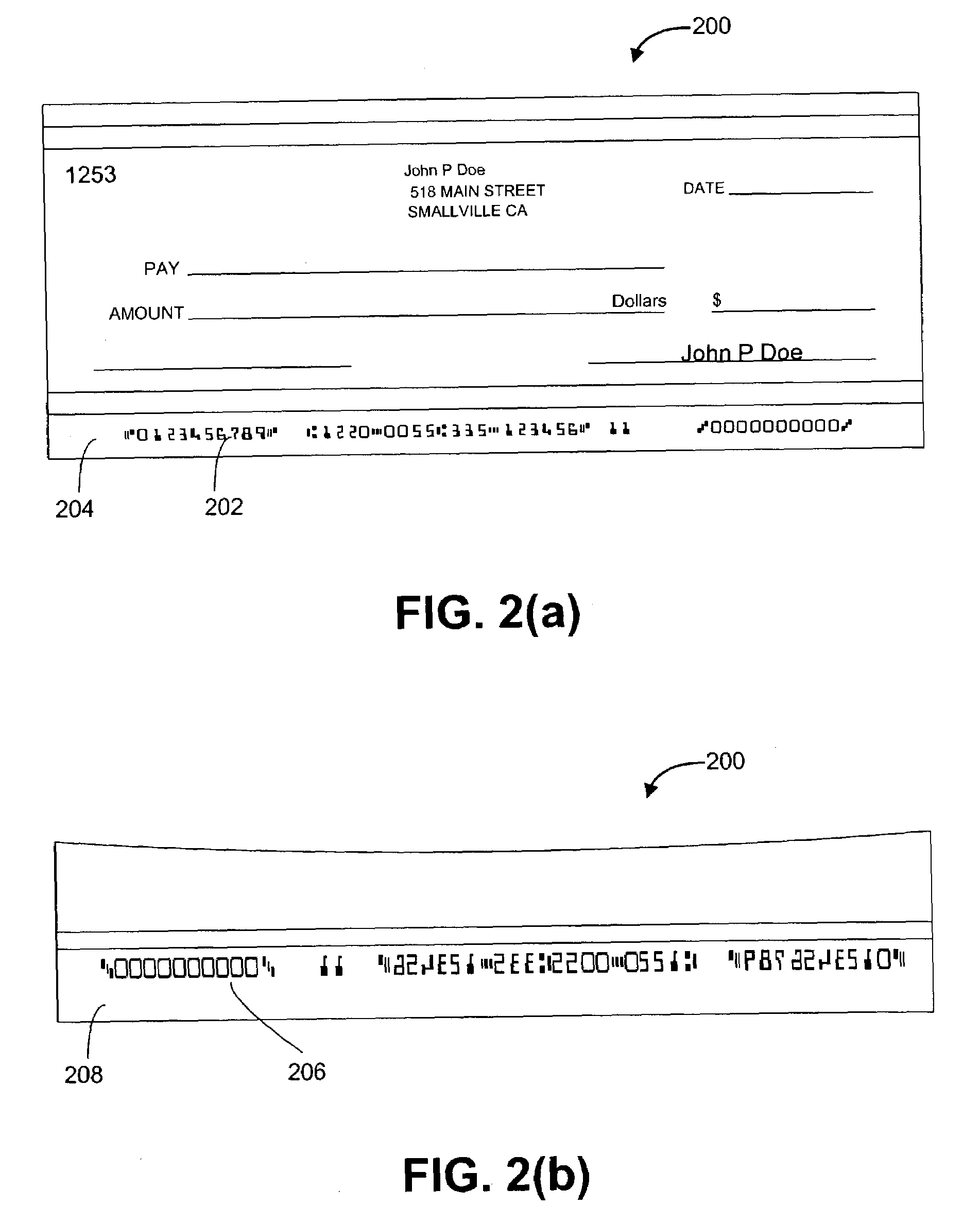System for producing secure toner-based images and methods of forming and using the same
a toner-based imaging and document technology, applied in the field of toner-based imaging systems, can solve the problems of difficult forging of images printed on the surface of documents, and achieve the effect of easy visual asses
- Summary
- Abstract
- Description
- Claims
- Application Information
AI Technical Summary
Benefits of technology
Problems solved by technology
Method used
Image
Examples
example i
SUBSTRATE EXAMPLE I
[0059]The following paper coating, including the specific weight parts of the components tabulated below, is dispersed in a reaction vessel with a high-speed mixer at about 80° C. for about 2 hours. The reaction vessel is allowed to cool to room temperature. The resulting reaction mixture is then filtered using a 50-micron filter. The coating mixture is transferred to a traveling paper web by the gravure roll coating technique. The coating is applied to a substrate in an amount of about 10 g / m2 coat weight.
[0060]
ExemplarySpecificCom-Man-CompositionCompositionponentChemicalufacturer(weight parts)(weight parts)PolyethyleneDow 8–3015GlycolChemicalPolyaziridineNeoresins0–55ResinInc NeocrylCX100Bis (2-Aldrich 3–2515ethylhexylChemicalsadipate)SurfactantChemcentral0–21Triton X100SolventIsopropylInterstate25–5032AlcoholChemicalSolventDistilled25–5032Water
[0061]The coated sheets of paper were tested in combination with the security toner on a Hewlett Packard 5SI laser prin...
example ii
SUBSTRATE EXAMPLE II
[0062]A paper substrate having a weight of about 75 g / m2, including a migration-enhancing agent embedded within the substrate, is manufactured using a paper mill. The pulp furnish includes about 60% birch sulphate pulp fibers having a brightness of about 89% ISO and about 40% pine sulphate fibers having a brightness of about 90% ISO. Starch, a hydrophobizing agent, a retention agent, a shading pigment, chalk, and triacetin are added as paper to the pulp mixture. The finished paper is initially formed into rolls of paper and then sheeted to a standard size of 8½ inches×11 inches.
[0063]A document was printed using the sheets of paper in combination with the security toner described above using a Hewlett Packard 5SI laser printer. Initially, the resulting image had high density, high resolution, with no noticeable background, and no migration of the visible red dye was apparent. Within 24 hours of printing, an indelible image became visible on the non-printed side o...
example iii
SUBSTRATE EXAMPLE III
[0064]A coating suspension is prepared by mixing 2 grams of amorphous silica, 10 ml of Magiesol MSO oil, and 10 grams of Kenamid E Wax. This mixture is heated to melt the wax and is coated on a back surface of Hammermill Copy Paper using a straight piece of glass. The paper was printed using a toner including Pylam Red dye, manufactured by Pylam Products Co., and security images of the printed image appeared within 24 hours of printing.
PUM
| Property | Measurement | Unit |
|---|---|---|
| size | aaaaa | aaaaa |
| weight percent | aaaaa | aaaaa |
| glass transition temperature | aaaaa | aaaaa |
Abstract
Description
Claims
Application Information
 Login to View More
Login to View More - R&D
- Intellectual Property
- Life Sciences
- Materials
- Tech Scout
- Unparalleled Data Quality
- Higher Quality Content
- 60% Fewer Hallucinations
Browse by: Latest US Patents, China's latest patents, Technical Efficacy Thesaurus, Application Domain, Technology Topic, Popular Technical Reports.
© 2025 PatSnap. All rights reserved.Legal|Privacy policy|Modern Slavery Act Transparency Statement|Sitemap|About US| Contact US: help@patsnap.com



